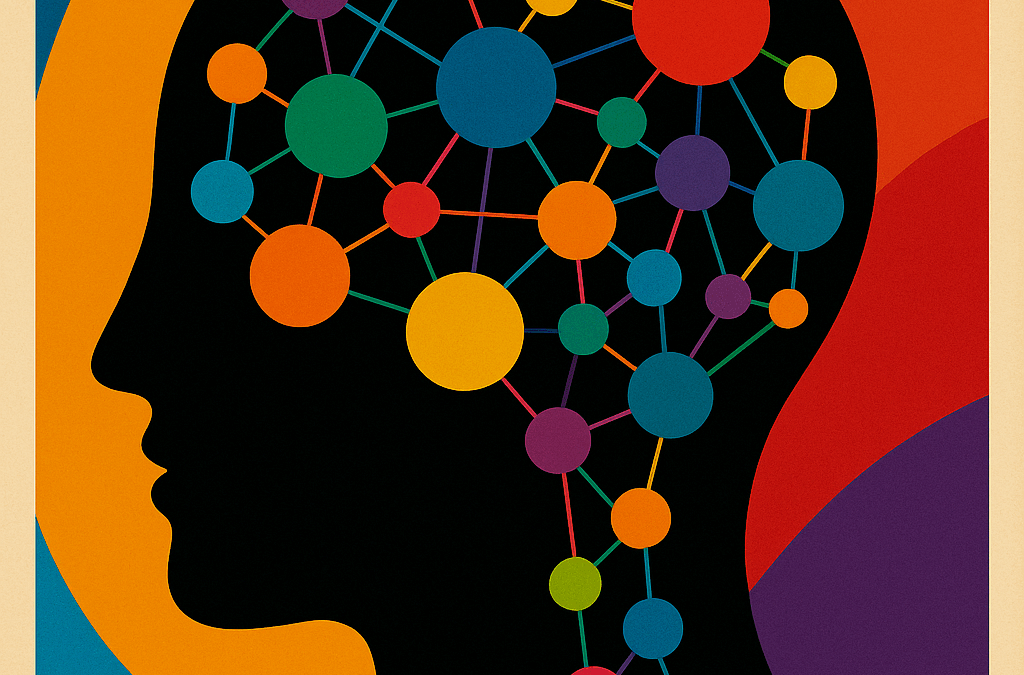Creativity: Connecting the Dots Others Don’t See – Tools to Spark and Track Creative Ideas
“Creativity is connecting the dots others don’t see.”
🔍 What It Really Means:
True creativity isn’t just about originality — it’s about synthesis. It’s the ability to take insights, patterns, or knowledge from one area and reframe them in another. The best creators aren’t always inventors; they’re translators across domains.
Steve Jobs said it best:
“Creativity is just connecting things.”
🧠 How to Cultivate It:
1. Read Widely Across Disciplines
-
Don’t just read what’s in your field.
-
A designer might find inspiration in biology, a coder from music theory, a marketer from mythology.
-
Example: The idea of Velcro came from observing how burrs stuck to fur — a biological observation turned into a practical invention.
2. Mix & Match Mental Models
-
Borrow frameworks from one industry and apply them to another.
-
Business strategy + evolutionary psychology = viral product design
-
Physics + philosophy = quantum consciousness
3. Practice Cross-Pollination
-
Join groups or communities outside your usual circle.
-
Attend a poetry slam if you’re a programmer.
-
Collaborate with people from wildly different backgrounds — this creates idea collisions.
4. Keep a “Curiosity Cabinet”
-
Maintain a digital or physical space where you collect unusual ideas, quotes, images, stories, questions.
-
Use tools like Notion, Evernote, or a physical Moleskine.
⚡ Micro-Habit for Creativity:
“1 idea + 1 unrelated concept = 1 new possibility.”
Do this daily. Write down something you learned today and combine it with something random from your past notes.
Example:
“Neural networks” + “Zen Koans” = meditation AI that helps users reach enlightenment through paradoxical questions.
Top Books to Unlock Cross-Disciplinary Creativity
🎨 1. Steal Like an Artist – Austin Kleon
A visual and practical guide to remixing inspiration. Embraces the idea that nothing is original, and creativity comes from influence.
🧠 2. Range: Why Generalists Triumph in a Specialized World – David Epstein
Shows how people who explore widely and integrate knowledge from many domains outperform deep specialists.
🕵️♀️ 3. A Technique for Producing Ideas – James Webb Young
A concise, powerful method for generating creative ideas through intentional “dot-collecting” and subconscious synthesis.
🌌 4. The Medici Effect – Frans Johansson
Explores how breakthrough ideas occur when diverse concepts and cultures collide — just like during the Renaissance.
🔍 5. How to Fly a Horse – Kevin Ashton
Debunks myths of genius and shows how real creativity is about consistent effort, curiosity, and connecting small dots.
🛠️ Tools to Spark and Track Creative Ideas
| Tool | Best For | Bonus Feature |
|---|---|---|
| Notion | Organizing your reading, notes, ideas | Create a “Cross-Pollination” database |
| Obsidian | Connecting thoughts across disciplines | Bi-directional linking for nonlinear thinking |
| Milanote | Visual thinking and creative planning | Great for moodboards, storytelling maps |
| Readwise | Highlighting + resurfacing ideas | Sync Kindle, Twitter, articles — resurfaces gems you forgot |
| Reelgood or Curio | Discovering diverse content (video or audio) | Surf from documentaries to philosophy podcasts |
🧪 Creative Exercises to Try
🔀 1. Idea Fusion Challenge
-
Pick 2 unrelated topics each morning (e.g., “blockchain” + “forest ecosystems”).
-
Ask: What if they were combined? What new ideas emerge?
-
Document 3 mashup concepts.
🎲 2. Random Input Generator
-
Use a random word generator or flip open a book to a random page.
-
Force a connection between that word and your current project.
-
This disrupts linear thinking and encourages novel links.
✏️ 3. The Metaphor Reframe
-
Take any problem you’re facing.
-
Try describing it as a metaphor from another world (e.g., a river, a symphony, a board game).
-
Ask: What does this new metaphor suggest that I haven’t thought of?
🎯 Bonus: Creative Role Models to Study
-
Leonardo da Vinci – Artist, engineer, anatomist, futurist.
-
Buckminster Fuller – Architect, inventor, systems thinker.
-
Björk – Musician who blends tech, biology, and fashion.
-
Tim Ferriss – Lifehacker who experiments across skills.
-
Maria Popova – Creator of The Marginalian (formerly Brain Pickings), a master of intellectual cross-pollination.
🧭 Final Thought:
Creativity isn’t magic. It’s the byproduct of being interested in everything — and bold enough to connect the seemingly unconnected.
 Learn. Trade. Thrive. Be Crypto Rich.
Learn. Trade. Thrive. Be Crypto Rich.
Crypto Rich is more than just a website; it’s your front-row seat to the wild world of crypto. I’ve ridden the waves, survived the crashes, and uncovered the opportunities that most miss. Now, I’m here to help you thrive.
Whether you’re new to crypto or a seasoned degen, this platform is packed with insights, strategies, and real-talk lessons from someone who’s been through it all.
💡 Learn the game. Beat the noise. Become Crypto Rich.
Let’s ride the next wave together 🌊🔥 Visit CryptoRich.io


